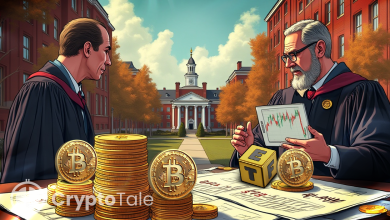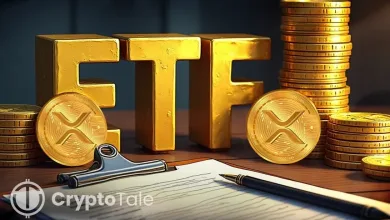Fed December Cut Odds Fade as Officials Signal Firm Resolve

- Fed leaders warn that inflation stays above target, and this shifts views toward a rate hold.
- Markets move as new remarks rule out an easy path to a December cut and raise tension.
- Investors watch fresh data as the Fed weighs slower growth and delayed economic signals.
Expectations for a December rate cut decreased sharply as fresh remarks from Federal Reserve officials steered market sentiment toward a hold. Futures markets now place a 60% chance on the Fed keeping rates unchanged in December after several policymakers expressed concerns about inflation and the release of the U.S. economic data.
Markets reacted quickly as U.S. agencies prepared to release delayed figures caused by the recent government shutdown. Investors reassessed positions as multiple Fed officials delivered firm comments on the economic outlook and policy direction.
Officials Warn on Inflation as Policy Divide Widens
Kansas City Fed President Jeffrey Schmid, Dallas Fed President Lorie Logan, and Cleveland Fed President Beth Hammack each repeated their concerns regarding inflation. Their remarks followed the central bank’s October rate cut and came at a crucial moment before the December 9–10 meeting. Reuters reported that their tone was coordinated as markets adjusted to shifting expectations.
Hammack spoke at the Pittsburgh Economic Club and said policy conditions did not call for immediate change. She said, “It’s not obvious that monetary policy should be doing more right now.” Her position aligned with broader caution across the central bank.
Logan, speaking at an energy conference hosted by the Dallas and Kansas City Fed banks, said she found it difficult to support another cut. She said she would need “convincing evidence that inflation is really coming down faster” or a clearer cooling in the labor market. Her comments directly challenged earlier market assumptions of an imminent cut.
Schmid echoed the same stance during the conference. He explained his dissent from the October decision and said he did not believe additional cuts would help labor-market concerns. He added that cuts could weigh on the Fed’s 2% inflation objective. His remarks contributed to the rising expectation of a hold.
Meanwhile, Stephen Miran pushed for more easing. His position displayed the internal divide within the Federal Open Market Committee, which now weighs both softer data and incomplete economic information caused by the shutdown.
Economic Conditions Shape Market Reaction
The U.S. economy continues to show inflation near 3%, above the Fed’s long-term 2% goal. This alone increased caution inside the central bank. At the same time, labor market signals created mixed readings, with some indicators slowing while others stayed resilient. These conflicting trends raised the threshold for further easing.
Additionally, key data releases were delayed during the government shutdown. Policymakers now approach the December meeting with fewer indicators than usual. Markets responded quickly to the missing information and shifted expectations as new comments arrived.
One Reuters report noted that earlier expectations for a December cut once neared 100%, but markets now place the odds near 50%. Another Reuters update said short-term futures “reflect a 60% chance of no December rate cut.” The CME FedWatch tool also recorded the shift.
Related: Mary Daly Supports Fed Rate Cut, Eyes December Data: Report
What Comes Next for Markets?
These developments pushed investors to reconsider risk exposure. Higher rates often pressure stocks, bonds, and crypto assets. Crypto markets can feel the effect quickly because they react to liquidity shifts and changing yield expectations. With a cut now less likely, traders adjusted their outlook.
For now, the latest comments from Fed officials place markets in a holding pattern as the next critical data points arrive.





